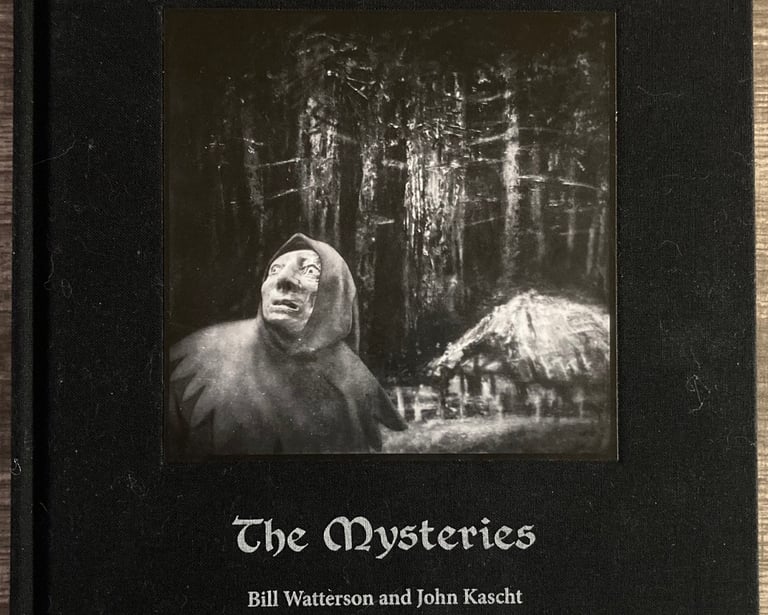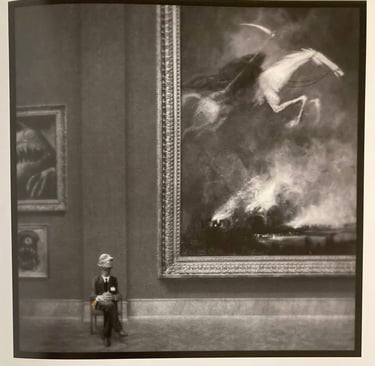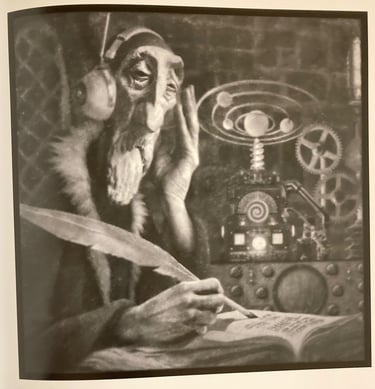
The Mysteries
The comic genius delivers something...decidedly more serious.
by Bill Watterson and John Kascht
Bill Watterson, the mastermind behind the timeless Calvin and Hobbes, was once asked why he hadn’t published anything following the famous strip’s retirement. His reply implied what most already feared; Calvin was too good—too great—to be ever surpassed. And so, rather than trying to top impossible expectations, he chose to exit as an inimitable legend. He “quit while being ahead,” as the old cliché says.
Whether a sensible decision or not, his self-imposed exile soon grew into its own kind of mysterious legend. Would he ever return? Would he ever enchant and dazzle and challenge the world again? “The Mysteries,” his first public work in nearly thirty years, holds the awkward answer. Essentially a cautionary tale wrapped in a riddle, the book’s ultimate mystery can’t quite escape the gravity-well that is Watterson himself; is this the appropriate instrument, the ideal song, to trumpet the artisan’s long-awaited return?
The story is short, terse, and explicitly ambiguous: A nameless kingdom is plagued by the so-called “Mysteries”—nebulous threats lurking in the nearby “misty” forest. Although not clearly understood or defined, the people spend their time fearing these shadowy imaginings until, eventually, after much seeking and searching (science!), they find their fears largely misguided. The mists of ignorance, in a sense, are lifted. But in their absence beckons a greater question; what happens when Man no longer fears God, Nature…or himself?
Black and white illustrations, rendered by both Watterson and caricature artist John Kascht, accompany each page of the tale. Readers left incredulous by the cryptic narrative might find redemption in these gnarled drawings which haunt like ghostly photos ripped from ancient, moldy tomes. The people in these images, far from Watterson’s cheeky comic designs of old, look decidedly three-dimensional…as if sculpted in half-melted clay or concocted within a twisted computer. Gothic and distorted, the art compares to the stop-motion brilliance of Tim Burton, just without the motion…or the charm. But maybe that’s the point.
Indeed, it’s as if Watterson wanted to subvert expectation to the most extreme degree possible, rejecting Calvin’s cute, colorful world for a bland and insufferable one. And in this, he unapologetically succeeds.
The Mysteries has a message, maybe several. The sins of Man’s arrogance? The significance of Myth? Ignorance is bliss? Climate change is serious? The death of Faith means a race to Death?
But whatever Watterson’s intent, he’s created a work decidedly ugly…unlikable…unthinkable.
And maybe, just maybe…that makes it great.--D














One of the so-called "mysteries" is eventually found and caught, as represented by this horrible, sweat box-like device. Watterson never reveals what these mysteries actually are, but whatever this one is, it can't be happy...nor particularly harmless if that iron vault is any indication.
Though decidedly serious, the art still betrays a smidge of Watterson's whimsy, as seen in these pics' backgrounds. The bigger question is how much of the art belongs to Watterson versus his partner, John Kascht?
In truth, some of the book's artwork underwhelms, but others, like this shot, impress. Either way, readers have complained that the book is too small (too handheld) to properly realize the artists' true genius and vision. It's a sound point.
The differences between Calvin and whatever it is Watterson has wrought with The Mysteries is considerable. One is bright, colorful, optimistic, and fun-loving. The other is drab, dreary, and not remotely endearing.
Contact: lostnostalgiaproductions@gmail.com
Website: www.lostnostalgia.com
Like what we're doing? Please consider throwing us a dollar into our Patreon page's tip jar!


